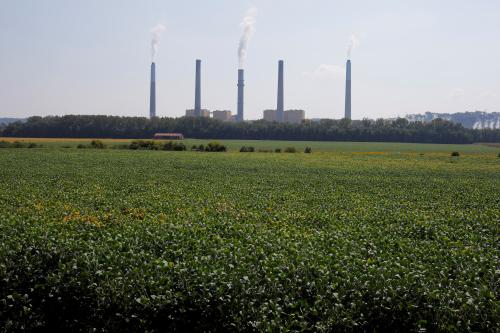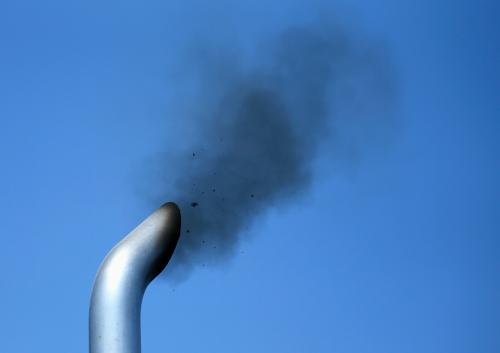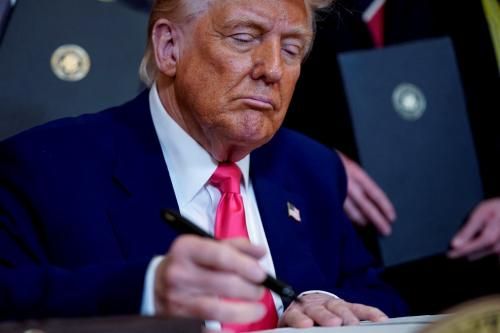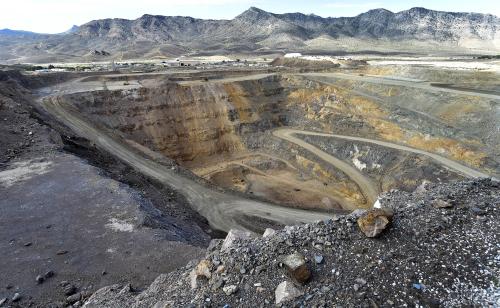This article originally appeared in the Australian Financial Review on December 4, 2018.
Climate policies being proposed by Australian politicians have become increasingly flawed because no-one is willing to countenance the idea of a price on carbon. In fact, the attempts to avoid the idea of pricing carbon have become so absurd that it now might be possible to start again with a design that is based on science and expertise rather than the nonsense that has passed as political debate driven by political cowardice.
To date, the best conceptual climate policy that had a chance to get through politically was the approach that John Howard took to the 2007 elections based on the approach of the Shergold Report on Emissions Trading. The subsequent approach of the in the Clean Energy Act of 2011, which started with a carbon tax and then was to evolve into a cap and trade system linked to a failing European trading system was always a bad idea. Direct subsidies, “direct action”, subsidized batteries and other policies might have some impact on carbon emissions, but they are high cost with low benefits compared to the approach of an economy wide carbon price.
It is important to call out a few myths, misperceptions and fabrications before outlining a way ahead.
First, nothing Australia does alone will change the future of the Great Barrier Reef. Climate change is a global issue and it will require a majority of major CO2 emitting countries to be involved in a policy which leads to substantial emissions reductions. Australia is small in terms of emissions. However, Australia can be important as a leader on climate policy design.
Second, whatever policy Australia adopts, the largest economic impacts on Australia are estimated to be from the policies that other countries follow. This was clear from the report I authored that was commissioned by Abbott Government in designing the targets that Australia proposed in Paris in 2015. As a country with a large reliance on exports of fossil fuels for national incomes, the policies in Australia to reduce carbon emissions only determine a fraction of the economic cost to Australia of an international carbon policy.
Third, the 2015 study found that if the world achieved the Paris commitments and Australia did not participate, the direct cost to the Australian economy from being outside the Paris Agreement was less than being in the Agreement. However, incorporating the cost of policy uncertainty on the increasing the cost of investing in energy generation technology, the costs of Australia being outside the Paris Agreement was larger than the cost of the domestic carbon policy. This has been borne out from what has happened to Australian energy prices over the past 3 years.
Fourth, the debate should not be focussed on what target Australia should have. No one can reliably say which target is appropriate at any point in time. The debate should be about policies that have the largest reductions in emissions at lowest economic cost. If it is possible to cut emissions quickly because of technological breakthroughs, then the cuts should occur more quickly. It no other countries take action, or the cost of Australia’s actions end up being higher than predicted, then there needs to be a way to vary the emissions reductions target over time. Australia acting alone will not change the global climate, but international climate action is inevitable, and it is in Australia’s national interest to be part of a cooperative global approach.
Fifth, all climate policies have a carbon price. In a carbon tax, the price is explicit. Renewable energy targets or subsidies for batteries have an implied carbon price that either consumers, taxpayers or firms will pay. Implied carbon prices tend to be higher than explicit carbon prices because they are hidden. It is dishonest for a politician to argue that carbon prices do not exist in climate policy.
Sixth, the recent debate in Australia has been focused on how electricity is generated or used. Yet carbon emissions from electricity are less than one third of the greenhouse gases in Australia. A policy that only deals with electricity misses most of the problem and ignores where cheaper carbon reduction options might be found. The fact that carbon emissions are economy wide is why economy wide carbon prices are so effective.
Finally, a solution to climate policy in Australia cannot be held together through a negotiation with a minor party. It must have broad bi-partisan support. To achieve this support the policy should directly improve the hip pockets of voters and also line up industry lobbyists in support of the policy.
One such approach, known as the McKibbin-Wilcoxen Hybrid policy, focusses on these key elements. First, announce a target of deep cuts for emission reductions over time (this could be Labor’s target). Second, create long-term emission permits that equal the emissions target in each year. Third, require firms that emit carbon dioxide to have a permit for the year of emission. Fourth, create a Central Bank of Carbon with the role of announcing caps on short term carbon prices for 3 years into the future. These prices will be achieved by selling annual permits to emitters to prevent the price from rising above the cap. This allows emissions to rise temporarily in a controlled way, in order to contain the costs. Fifth, create a futures market for carbon permits that generates a carbon price into the long-term future. The short-term carbon price is a cost, the long term carbon price creates an opportunity.
This approach is much like the way monetary policy works with a fixed interest rate in the short term to control short term costs of borrowing and variable interest rates in the long-term bond market that creates incentives to invest.
A critical part of the process of mobilizing a political constituency is to give all long- term permits equally to households and firms to compensate for higher prices that are caused by the explicit carbon price. People could put these carbon permit in their superannuation funds or sell them to fossil fuels companies. The initial allocation would encourage a large political constituency to support the policy for financial as well as ethical reasons. Cancelling the policy would be a large financial loss for voters who hold the permits in their superannuation accounts and fossil fuel companies who hold the long term permits on their balance sheets.
What is needed in Australia today is leadership on climate policy. A leader needs to acknowledge the risks of climate change and the reality that the international community will eventually take policy action that will impact Australia. What is the greatest risk – not believing in climate change and doing nothing only to find it is a serious problem which requires very expensive structural adjustment, or implementing low cost options to give incentives to reduce emissions wherever possible?
The Brookings Institution is committed to quality, independence, and impact.
We are supported by a diverse array of funders. In line with our values and policies, each Brookings publication represents the sole views of its author(s).






Commentary
Op-edAustralia can’t run away from a carbon price any longer
December 7, 2018